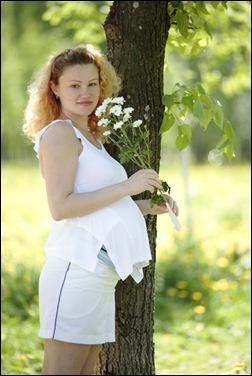|
|||||||||||||||
|

CLICK ON weeks 0 - 40 and follow along every 2 weeks of fetal development
|
|||||||||||||||||||||||||||
How to prevent asthma in your newborn? The best way to reduce a child's chances of developing asthma might be to make sure mom has enough vitamin D during her second trimester of pregnancy. According to a new study from the University of Kansas, the most cost-effective way to get mothers more vitamin D could be as simple as soaking up a little more sun. The research will appear in a new publication: the American Journal of Health Economics.
"Our health system spends billions and billions treating asthma, and there's lots and lots of opportunity costs," said David Slusky, assistant professor of economics at the University of Kansas (KU). "Pain and suffering, loss of productivity and premature death — asthma has it all." When resources are being used inefficiently, that's when Slusky and his fellow economists step in. They were aware of the recent medical hypothesis by Scott Weiss and Augusto Litonjua, both physicians at Brigham and Women's Hospital in Boston and professors at Harvard Medical School. The physicians hypothesized that vitamin D levels in the second trimester of pregnancy influence probability a fetus will develop asthma later in life. David Slusky, Nils Wernerfelt of the Massachusetts Institute of Technology along with Richard Zeckhauser of Harvard's Kennedy School, tested the medical hypothesis using an economist's tools — surveys and health data.
Using data from hospital discharges in two states and from a national survey, Slusky and his colleagues looked at where and when asthmatics were born. Then they collected measurements of sunlight at those locations, specifically when mothers would have been in their second trimesters. Sunlight is where Americans get more than 90 percent of our vitamin D. What the economists found was that a mother's increased sunlight exposure — and consequently vitamin D level — during her second trimester lowers her child's chance of developing asthma. To address concerns about possible systemic differences between individuals from different parts of the country, the co-authors considered relative differences. "We were not looking at sunny places versus non-sunny places," Slusky explained "We looked at the relative differences of the level of sunlight at a particular place at a particular time of year." In other words, people born in Georgia in July of 1978 received a different exposure to sunlight in utero than did Georgians born a year later. Slusky: "If that place is relatively more sunny during the second trimester, we found relatively lower rates of asthma."
"Skin cancer is a very serious disease, and I don't want to minimize it, but at some point that extra minute you spend inside is costing you more vitamin D than it's helping you not get skin cancer," Slusky said. Vitamin D can be acquired from dietary supplements, too, but Slusky and his colleagues point out that the prenatal vitamins many pregnant women take already include vitamin D and that they may not be getting the full benefit from them.
"Calibrating this into the proper policy recommendation is something I'll leave to others, but I think that's where this research is going," Slusky said. Case in point, health officials in Australia are becoming more aware of vitamin D deficiencies. They have begun urging schools to relax requirements that students wear hats while outside during that continent's winter months of June and July. "Clearly if I'm going to the beach or going to spend all day outside, I need to put on sunscreen," Slusky said. "But spending 10 minutes outside without it may not be such a bad idea." Abstract |
Apr 5, 2016 Fetal Timeline Maternal Timeline News News Archive 
Economists found that a mother's increased sunlight exposure — and increased vitamin
|
|||||||||||||||||||||||||||

